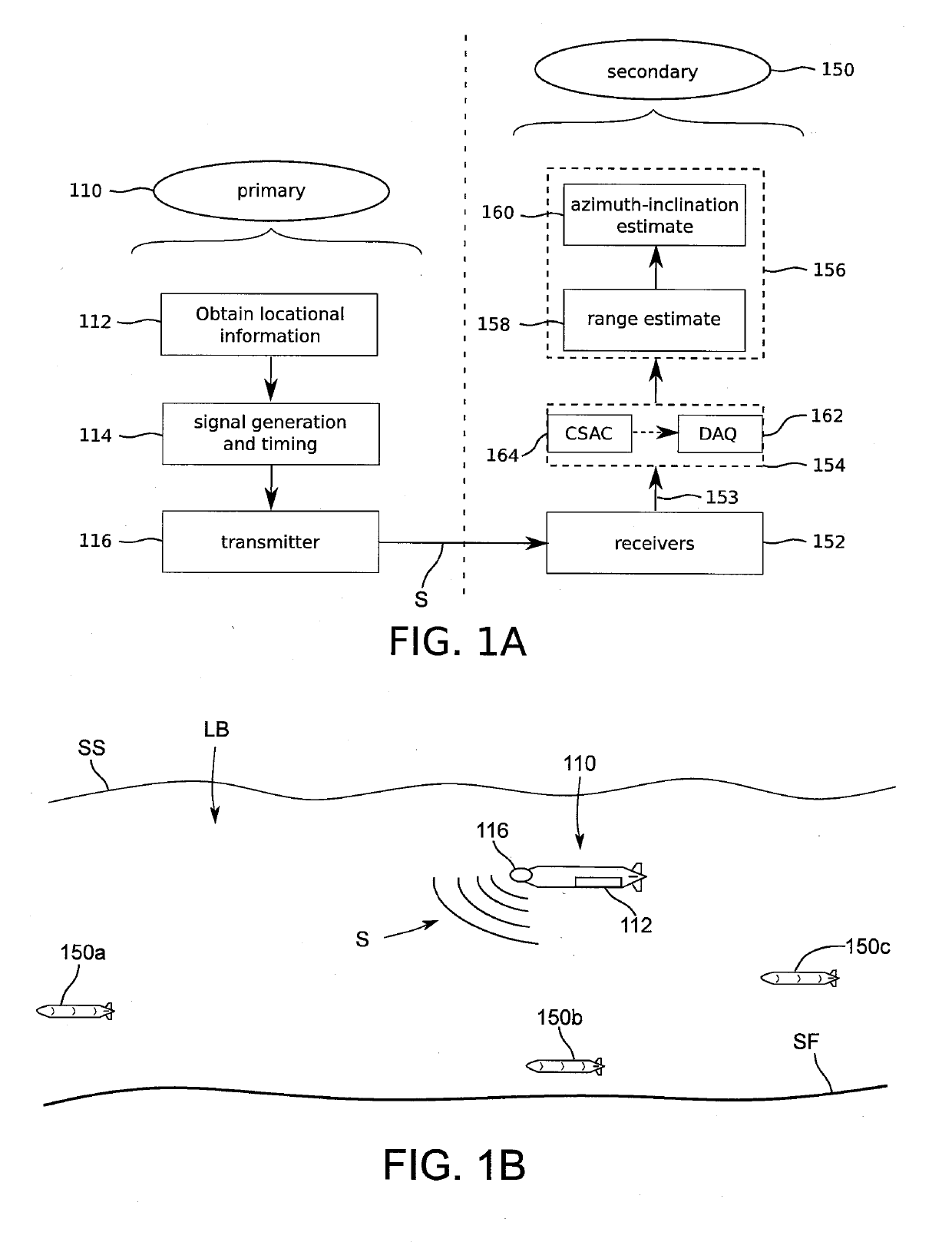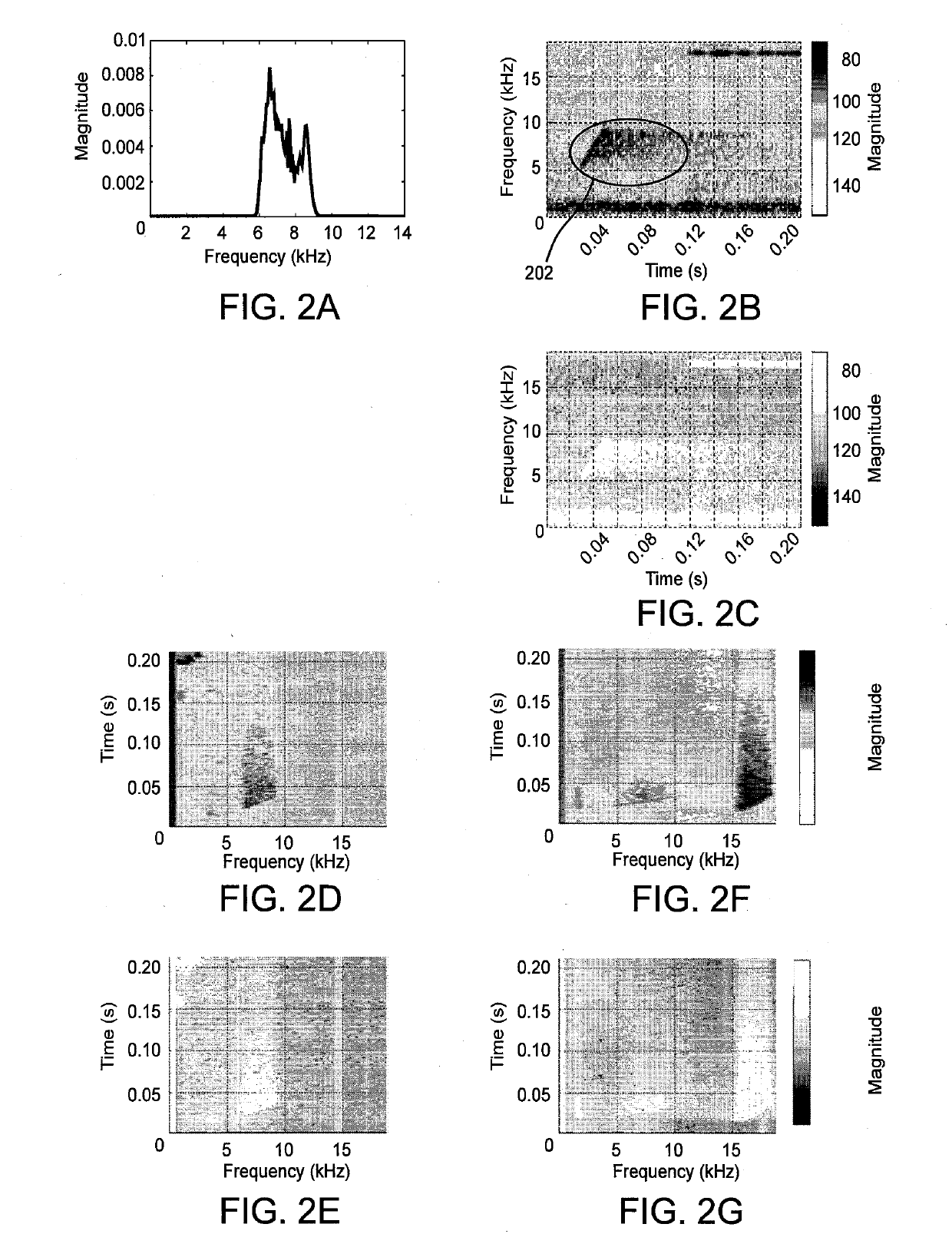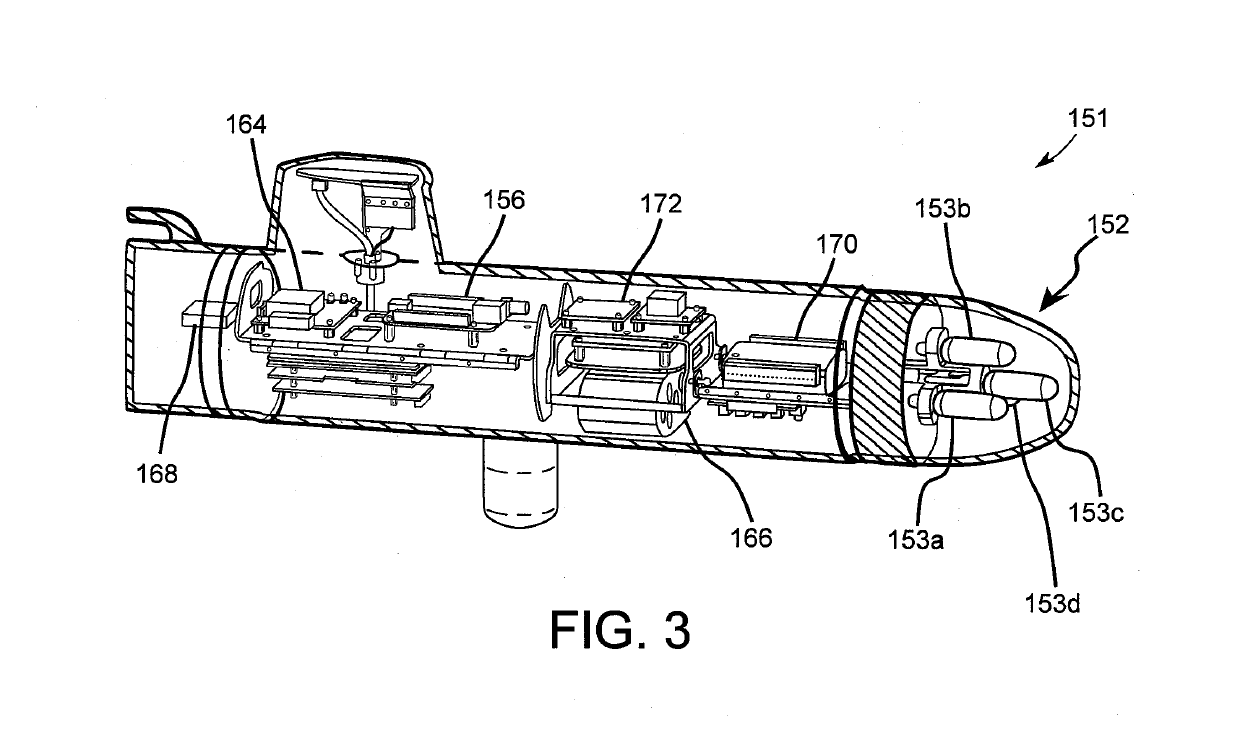Submerged Vehicle Localization System and Method
a submerged vehicle and localization technology, applied in the direction of instruments, beacon systems using ultrasonic/sonic/infrasonic waves, measurement devices, etc., can solve the problems of increasing the acoustic noise of the system, reducing the fidelity of the system, and prone to errors in signal measurement and calculation by the receiving vehicle. achieve low-cost yet accurate localization
- Summary
- Abstract
- Description
- Claims
- Application Information
AI Technical Summary
Benefits of technology
Problems solved by technology
Method used
Image
Examples
example 1
[0156]Referring to FIGS. 7A-7F, experiments were performed using our SandShark AUV with acoustic payload (i.e. the secondary payload 151) on a portion of the Charles River by the MIT Sailing Pavilion. Our acoustic beacon (i.e. the primary 110) was submerged to about 0.5 m depth and fastened to the pavilion dock, at a known GPS position 710c and 710f. The AUV was pre-programmed with a mission where it was instructed to travel back-and-forth along the dock for 170 m at 2 m depth and a speed of 1.4 m / s. The mission duration was set to 1200 s, and the AUV was instructed to surface for a 120 s GPS fix 712a-712g whenever it was at the end of a 170 m run and the time since the last fix was greater than 150 s.
[0157]Both matched filtering and phased-array beamforming were performed on the Raspberry Pi 3 in real-time at approximately 1.25 Hz with 4050 look-angles (15 inclination and 270 azimuth equally-spaced angles). This data was recorded by the payload along with pre-filtered navigation da...
example 2
[0164]To demonstrate single-beacon piUSBL absolute navigation, we carried out two additional closed-loop deployments (designated run 3 and run 4) of our SandShark AUV on a portion of the Charles River adjacent to the MIT sailing pavilion, illustrated in FIGS. 8A-8D. Our custom acoustic beacon (i.e. primary 810) was set to broadcast a 20 ms, 16-18 kHz linear frequency modulated (LFM) up-chirp, and was affixed to the pavilion dock and submerged to a depth of approximately 1 m. The SandShark (i.e. a secondary vehicle 150 plus payload 151) was programmed to run a mission to follow a racetrack parallel to the dock of 90 m length and 10 m width, at a depth of 2 m and a speed of 1 m / s. The mission length was set to 1200 s, with the vehicle instructed to surface for GPS approximately mid-way through the mission.
[0165]Since GPS is unavailable underwater, we also deployed two commercial Hydroid LBL transponders 811a, 811b fastened to the pavilion at a depth of approximately 1 m, with the firs...
example 3
Relative Autonomy for Command and Control
[0181]The objective of this example is a secondary vehicle command and control methodology that is easy to maintain as secondary vehicle formations scale up in number, while providing accurate acoustic navigation for a new generation of miniature, lowcost AUVs that lack high-fidelity navigational sensors (i.e. a DVL-aided INS). This method was demonstrated in field trials in which three SandShark AUVs were placed in the water, and were commanded to different patterns based on the broadcast acoustic waveform and position of a single beacon (i.e. primary) in the Charles River.
[0182]The implications for this operational paradigm are to make multi-vehicle operations easier on the operator. Each AUV has a unique identifier assigned automatically on launch, and which determines parameterized offsets in x (Δx), y (Δy), depth (Δz), range (r) and heading (θ) retrieved from a pre-defined look-up table. Desired vehicle state in each operational mode is ...
PUM
 Login to View More
Login to View More Abstract
Description
Claims
Application Information
 Login to View More
Login to View More - R&D
- Intellectual Property
- Life Sciences
- Materials
- Tech Scout
- Unparalleled Data Quality
- Higher Quality Content
- 60% Fewer Hallucinations
Browse by: Latest US Patents, China's latest patents, Technical Efficacy Thesaurus, Application Domain, Technology Topic, Popular Technical Reports.
© 2025 PatSnap. All rights reserved.Legal|Privacy policy|Modern Slavery Act Transparency Statement|Sitemap|About US| Contact US: help@patsnap.com



